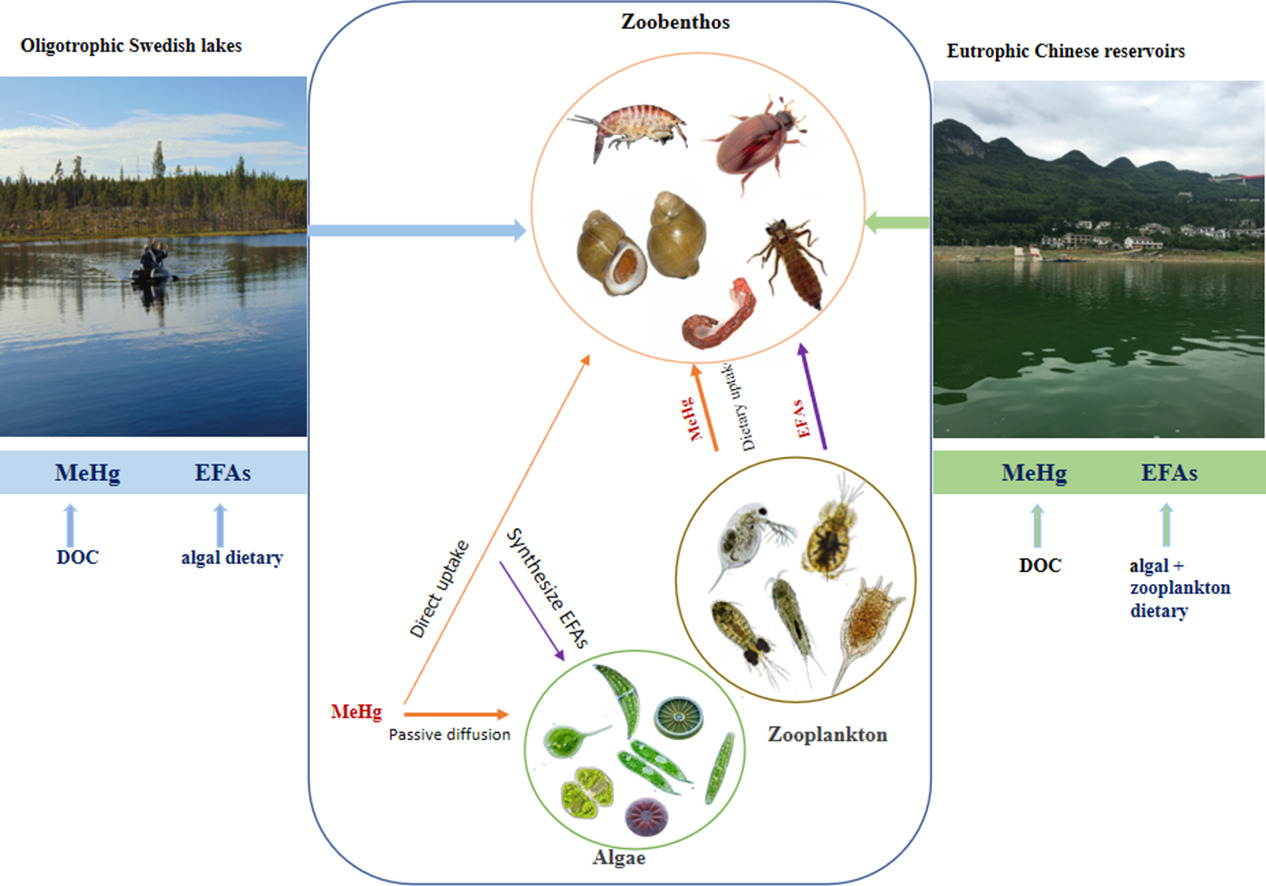
Fish provide important dietary nutrients, such as essential proteins, lipids and polyunsaturated fatty acids (PUFA). However, they are also a major contributor to the potent neurotoxin mercury (Hg) exposure to humans.
As the major food sources for fish, zoobenthos can transfer Hg and PUFA from the base of food webs to fish. In addition, compared to fish, zoobenthos rely more on primary producer as food and is susceptible to changes in environmental conditions.
Recently, Dr. JING Min and Prof. YAN Haiyu from the Institute of Geochemistry of the Chinese Academy of Sciences (IGCAS) found that environmental characteristics and algal diet sources can result in difference of Hg and PUFA in zoobenthos.
The study was published in Science of The Total Environment on March 29.
The researchers compared Hg and PUFA bioaccumulation of zoobenthos in two largely contrasting aquatic ecosystems: freshwater reservoirs in China and natural lakes in Sweden.
"Chinese reservoirs, where frequent aquaculture activities can be seen, are generally eutrophic and alkaline, whereas lakes in Sweden are mostly oligotrophic, acidic and humic," said Dr. JING.
Considering the eutrophication is the dominated environmental variables, the researchers explored the effect of abiotic (water chemistry) factors on Hg and PUFA bioaccumulation in zoobenthos. They also investigated the effect of base food web composition on Hg and PUFA bioaccumulation in zoobenthos through algae dietary by using PUFA as the biomarker.
The results showed that the average total Hg and methylmercury in zoobenthos were higher in Chinese reservoirs than those in Swedish lakes. Average eicosapentaenoic acid content of zoobenthos was similar in these two habitats, yet average docosahexaenoic acid content of zoobenthos was higher in Chinese reservoirs than that in Swedish lakes.
"Besides the composition and density of algae, the essential fatty acids accumulation of zoobenthos in Chinese reservoirs is also related to the dissolved organic carbon concentration," said Prof. YAN.
Additionally, the eutrophication of Chinese Reservoirs didn't lower the Hg bioaccumulation in zoobenthos, and plankton was proved to be the main dietary sources of Hg in zoobenthos from Chinese reservoirs. By contrast, in Swedish lakes, dissolved organic carbon concentration was the main impact factor for Hg bioaccumulation in zoobenthos.
The study revealed the diet influence on Hg and essential fatty acids bioaccumulations in zoobethos from different aquatic systems, which may help assessing the fitness of aquatic food webs in the future.
This work was supported by the Strategic Priority Research Program of Chinese Academy of Sciences, the National Natural Science Foundation of China, the Sino-Swedish Mercury Management Research Framework (SMaRef) of the Swedish Research Council, Opening Fund of the State Key Laboratory of Environmental Geochemistry, and Guizhou Science and Technology Fund Project.

The effects of abiotic (water chemistry) and biotic factors (dietary algae ) factors on Hg and PUFA bioaccumulation in zoobenthos from Chinese reservoirs and Swedish lakes. (Image by IGCAS)

86-10-68597521 (day)
86-10-68597289 (night)

86-10-68511095 (day)
86-10-68512458 (night)

cas_en@cas.cn

52 Sanlihe Rd., Xicheng District,
Beijing, China (100864)

